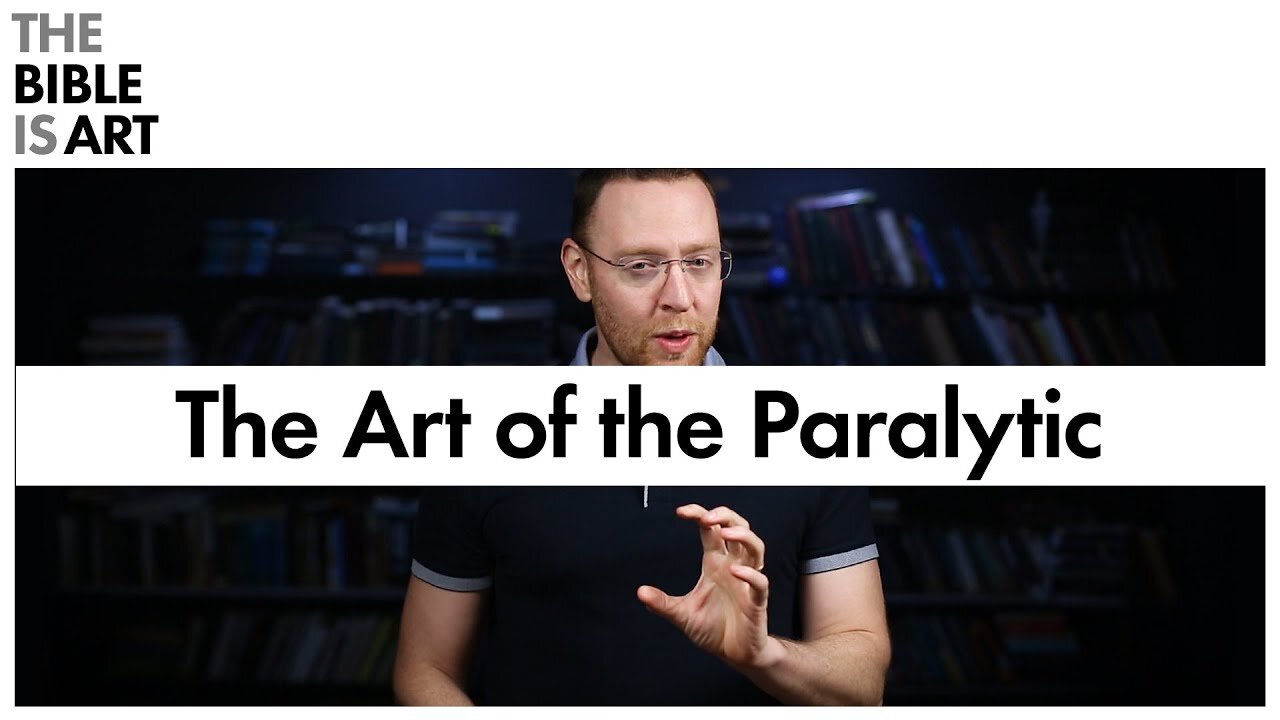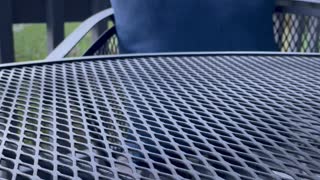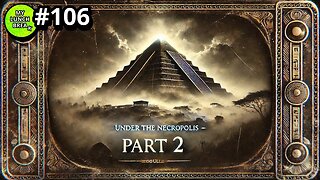Premium Only Content

The Art of The Gospel of Mark's Paralytic
Support the Channel: https://www.patreon.com/thebibleisart
Website: https://www.thebibleisart.com
Email: thisdivineart@gmail.com
Twitter: @johnbhiggins
| Transcription |
Welcome back to the Bible Is Art where we explore the literary artistry of the Bible and this week we are talking about the story of the paralytic. That one where the friends lower the paralytic man into the house to be with Jesus. And we will look at some fascinating details that clue us in to another level of meaning in this text. Let me show you how.
This story occurs in all three synoptic Gospels, Matthew, Mark, and Luke, but we’re going to be looking at Mark's version. Let’s review the story. It’s only 12 verses so let’s read the whole thing:
And when he returned to Capernaum after some days, it was reported that he was at home. And many were gathered together, so that there was no more room, not even at the door. And he was preaching the word to them. And they came, bringing to him a paralytic carried by four men. And when they could not get near him because of the crowd, they removed the roof above him, and when they had made an opening, they let down the bed on which the paralytic lay.
And when Jesus saw their faith, he said to the paralytic, “Son, your sins are forgiven.” Now some of the scribes were sitting there, questioning in their hearts, “Why does this man speak like that? yHe is blaspheming! Who can forgive sins but God alone?” And immediately Jesus, aperceiving in his spirit that they thus questioned within themselves, said to them, “Why do you question these things in your hearts?
Which is easier, to say to the paralytic, ‘Your sins are forgiven,’ or to say, ‘Rise, take up your bed and walk’? But that you may know that the Son of Man has authority on earth to forgive sins”—he said to the paralytic— “I say to you, rise, pick up your bed, and go home.” And he rose and immediately picked up his bed and went out before them all, so that they were all amazed and glorified God, saying, “We never saw anything like this!”
Now, the story is pretty straightforward, but the extended descriptions of the actions of the paralytic or his friends is what caught my attention. In such short stories whenever there are a lot of words given to seemingly less important things, like the movement of the paralytic, it makes me wonder if our author is drawing our attention to it for a reason. Perhaps what on first reading appears to be minor or secondary is actually major and primary.
So I want you to think about if any of these details sound familiar. Friends lower a body down then he rises and walks out. Mark uses words and actions here that he will use later with Jesus in his death and resurrection. So Mark has composed this story to look like, to parallel Jesus‘ death and resurrection.
OK so that’s cool enough but the second question and equally important is why, why has he made this parallel, how does that contribute to the point Mark is trying to make about Jesus. Literary artistry rarely if ever exists as pure ornamentation, icing on the cake that doesn’t have any relation to the main theses and themes of the work. All the aesthetic features are building up one cumulative case. So what is the case here?
Well let’s start with why do the friends lower him into the house? I think because lowering is a symbol of going down to death. Notice that when he is healed he exits the house whereas the Pharisees do not. Also notice that the teaching that Jesus is doing is in the home, in death. And this is because Jesus‘s death will be our tutor.
Mark uses the same words “to rise” and “door” in this story and the resurrection story to tie the stories together. You also have similar actions. In each story you have a body laid flat and placed into a location that is taken apart. In the story of the paralytic, the roof is taken off and in the death and resurrection scene the narrator tells us that there was a stone cut out from the rock (Mark 15:46)
Also in each story you have four friends who accompany the sufferer. In the story of the paralytic we are told that the paralytic is “carried by four men” (2:3) and in Mark 15 we are told about Simon the Cyrene who carries Jesus’ cross, Mary Magdalene, and Mary Jesus’ Mother, and Joseph of Arimathea who carries Jesus body. Notice the connection of carrying in each story.
There is also a similar identification of Jesus. In Mark 2, the scribes respond to Jesus forgiving sins by questioning, “Who can forgive sins but God?” And during the crucifixion, the centurion declares, “Truly, this was the Son of God” (15:39). This identification of Jesus and divinity is rare in Mark’s gospel.
This last connection also reveals a contrast. In Mark 2, the narrator characterizes the scribes as “sitting” (2:6) and the narrator leaves them there, static and inactive. This is in contrast to the paralytic who was inactive but because Jesus heals him he rises and walks out.
-
 1:28
1:28
Teleios
3 years agoGospel
67 -
 2:45
2:45
Whisperingpinesstudio
3 years agoGalatians and 1 Gospel
72 -
 3:10
3:10
sillyboy
3 years ago $0.01 earnedGospel Sing
894 -
 1:30
1:30
Teleios
3 years agoThe Gospel
29 -
 3:27
3:27
Whisperingpinesstudio
3 years agoPaul's gospel
973 -
 1:52:24
1:52:24
Squaring The Circle, A Randall Carlson Podcast
1 day ago#032 Flournoy Holmes' Artwork Helped Define The Southern Rock Phenomenon of The Early 1970's
15.6K3 -
 19:56
19:56
inspirePlay
1 day ago $0.21 earnedWalking with Lions & Facing Africa’s Wild Side | Safari Adventure with the Grid Championship Crew!
8.97K1 -
 10:50
10:50
RTT: Guns & Gear
1 day ago $0.72 earnedBudget Friendly Carry 2011: EAA Girsan Brat 2311
10.6K3 -
 3:49:06
3:49:06
Alex Zedra
16 hours agoLIVE! New Game | Nuclear Nightmare
102K14 -
 25:08
25:08
MYLUNCHBREAK CHANNEL PAGE
1 day agoUnder The Necropolis - Pt 2
284K78